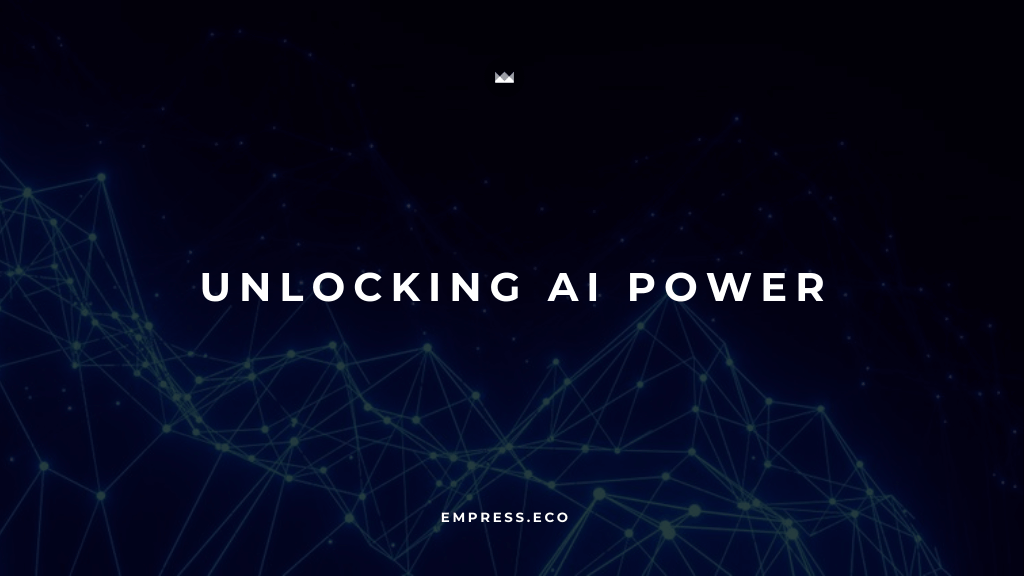
Unlocking the Power of Generative AI for Your Business
Discover how AI-driven automation is transforming business efficiency and driving growth.
Table of Contents
Staying competitive often means finding new ways to innovate, streamline operations, and connect with customers. One technology that’s making waves in this regard is Generative AI. But what exactly is Generative AI, and how can it be useful for your business? Let’s break down the basics, explore its relevance, and see how it can start making an impact on your operations today.
Understanding Generative AI: What It Is and Why It Matters
Generative AI is a type of artificial intelligence that’s designed to create new content, solutions, or ideas based on patterns it has learned from existing data. Unlike traditional AI, which focuses on analyzing data and making predictions, Generative AI takes things a step further by generating entirely new data that mirrors the characteristics of what it has learned.
Imagine having a tool that could draft personalized emails, create marketing materials, or even generate new business ideas based on your existing data. This is the promise of Generative AI—it doesn’t just help you analyze your business; it helps you create new value.
For businesses, this means the potential to automate tasks, enhance creativity, and innovate in ways that were previously time-consuming or resource-intensive. Whether it’s developing new products, personalizing customer interactions, or streamlining internal processes, Generative AI can be a powerful ally in your business toolkit.
Breaking Down the Basics: How Generative AI Works
At its core, Generative AI learns by example. It analyzes vast amounts of data to understand the patterns, relationships, and characteristics within that data. Once it has a solid understanding, it can generate new content or solutions that are similar to what it has learned but are entirely new creations.
A simple analogy might be that of a chef learning to create a new dish. By studying various recipes, understanding the ingredients, and mastering the techniques, the chef can start to experiment and create new dishes that are inspired by the originals but offer something fresh and unique. In much the same way, Generative AI learns from the data it is fed and then creates new outputs based on that knowledge.
For example, if your business has a library of marketing content, Generative AI can analyze this content and generate new marketing materials that align with your brand’s voice and style. The result is consistent, high-quality content created faster than ever before.
Generative AI vs. Traditional AI: What’s the Difference?
Traditional AI and Generative AI are tools designed for different purposes. Traditional AI is typically used for tasks like making predictions, classifying data, or optimizing processes. It’s great at analyzing existing data and providing insights that can inform business decisions.
Generative AI, on the other hand, is about creation. It doesn’t just analyze data—it generates new data. This makes it particularly useful for tasks that require creativity, such as content creation, product design, or developing new business strategies.
Think of traditional AI as a data analyst who helps you understand your business better, while Generative AI is more like a creative consultant who helps you come up with new ideas and solutions based on that understanding. Both are valuable, but Generative AI adds a layer of creativity and innovation that can take your business to the next level.
Real-World Applications: How Generative AI Can Benefit Your Business
So, how can Generative AI actually be applied in your business? Here are a few examples that show the versatility and value of this technology:
- Content Creation: Generative AI can automate the creation of marketing content, such as blog posts, social media updates, and product descriptions. This not only saves time but also ensures that your content remains consistent and aligned with your brand voice.
- Design and Prototyping: In industries like fashion, automotive, or electronics, Generative AI can be used to design new products. By analyzing existing designs and customer feedback, AI can generate new concepts that are innovative and market-ready.
- Personalized Marketing: Generative AI can help you create personalized marketing campaigns tailored to individual customers. By analyzing customer data, AI can generate personalized emails, advertisements, and product recommendations, leading to higher engagement and conversion rates.
- Customer Interaction: AI-powered chatbots using Generative AI can provide personalized responses to customer inquiries, enhancing the customer experience and freeing up human resources for more complex tasks.
- Strategic Planning: Generative AI can analyze market trends, competitor actions, and internal business data to generate strategic insights. This can help your business identify new opportunities, anticipate risks, and make more informed decisions.
- Data Augmentation: If you’re building AI models, Generative AI can help by creating synthetic data that mimics real-world data. This can be particularly useful if you need to train models on large datasets but don’t have enough real data available.
Making Generative AI Accessible: Overcoming Common Hesitations
It’s understandable if you’re hesitant about adopting a new technology like Generative AI, especially if you’re not a tech expert. The good news is that Generative AI is designed to be accessible and user-friendly, even for those with little technical experience. Here’s why you don’t need to worry:
- User-Friendly Tools: Many Generative AI platforms are built with business users in mind. They come with intuitive interfaces, pre-built templates, and step-by-step guides that make it easy to get started.
- Scalable Solutions: You can start small with Generative AI and scale up as you become more comfortable. Whether it’s automating a single task or implementing AI across your entire organization, you can tailor the approach to fit your needs.
- Affordable Options: There are affordable Generative AI tools available that allow you to experiment with AI without a significant financial investment. Many of these tools offer free trials or pay-as-you-go pricing models.
- Support and Resources: There’s no shortage of support available to help you get started with Generative AI. From online tutorials and webinars to dedicated customer support teams, you’ll find plenty of resources to guide you through the process.
- Incremental Adoption: You don’t have to overhaul your entire business to start using Generative AI. Begin with a few small projects where AI can add immediate value, such as content creation or customer service, and expand from there.
Implementing Generative AI: A Step-by-Step Guide
Ready to start using Generative AI in your business? Here’s a simple, step-by-step guide to help you get started:
- Identify a Business Need: Begin by identifying a specific business challenge or opportunity where Generative AI could be useful. This could be anything from automating content creation to personalizing customer interactions.
- Choose the Right Tools: Research and select a Generative AI tool that fits your needs. Look for tools that are easy to use and offer the features you need to achieve your goals. Many tools offer free trials, so you can experiment before committing to a particular solution.
- Start Small: Begin with a small project that allows you to see Generative AI in action without overwhelming your resources. For example, you might start by using AI to generate weekly social media posts or to draft email templates. Starting small allows you to learn and adjust as you go.
- Evaluate the Impact: After implementing your initial AI project, take the time to evaluate the results. Did AI help you achieve your goals? What worked well, and what could be improved? Use these insights to refine your approach and plan for future AI projects.
- Expand and Scale: Once you’re comfortable with your initial AI applications, consider expanding AI’s role in your business. This might involve integrating AI into more complex processes or exploring new use cases that can drive growth and innovation.
- Continuous Learning: Stay updated on the latest developments in Generative AI and continue to explore new ways to leverage the technology. The more you learn and experiment, the more value you’ll be able to extract from AI.
Final Thoughts: Embracing Generative AI for Business Success
Generative AI offers businesses a powerful tool for enhancing creativity, automating tasks, and driving innovation. By understanding the basics of how it works and exploring its potential applications, you can start to unlock new opportunities and stay ahead in a competitive market.
Remember, you don’t need to be a tech expert to start using Generative AI. With the right tools and a willingness to experiment, you can begin to see the benefits of AI in your daily operations and long-term strategies. As you continue to explore and implement Generative AI, you’ll find that it’s not just a tool for tech-savvy companies—it’s a valuable asset for any business looking to innovate and grow.
Empress Newsletter
Join the newsletter to receive the latest updates in your inbox.



